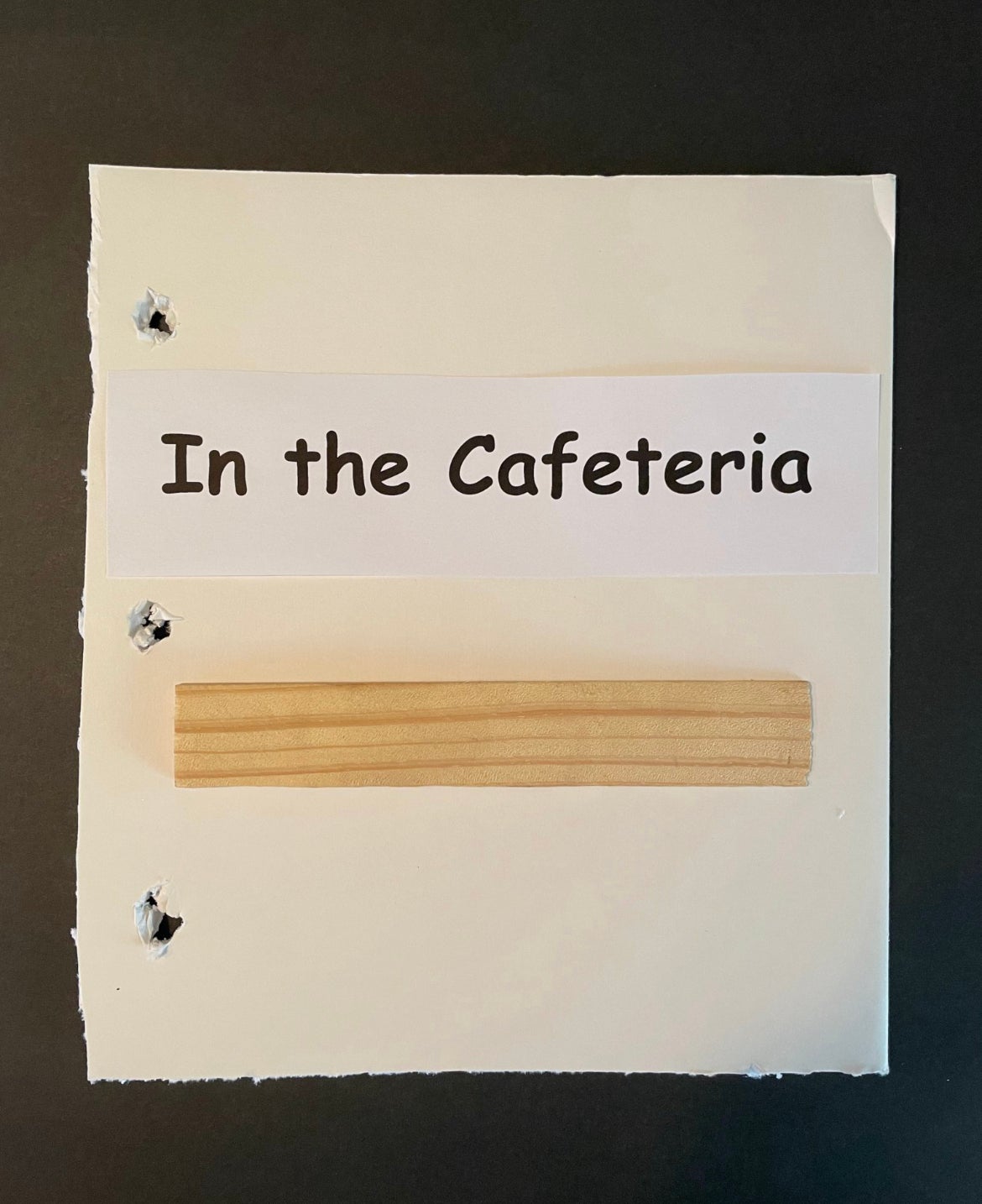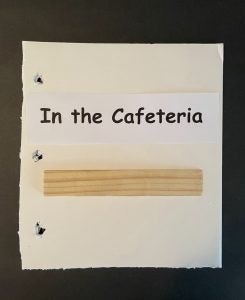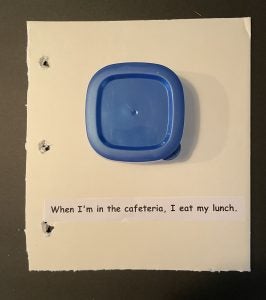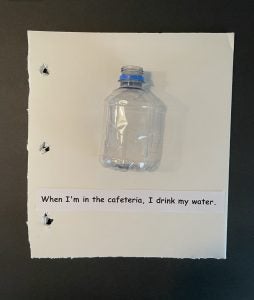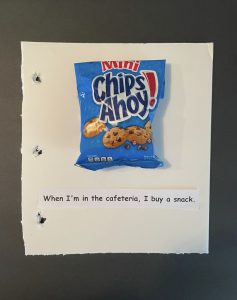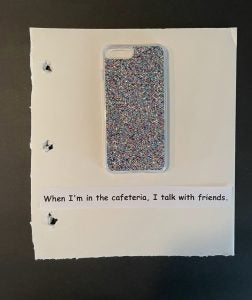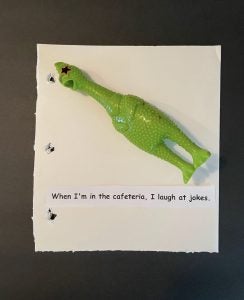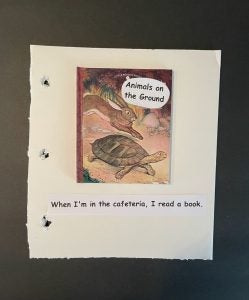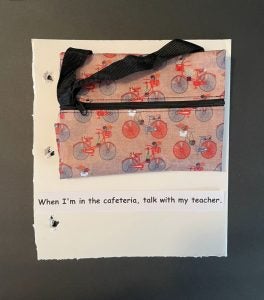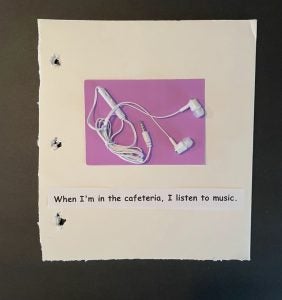We all like to revisit experiences we’ve had and share those memories with others. Experience books provide the chance to revisit and review life events, which in turn creates communication and literacy learning opportunities. The great thing about these books is that you can write them yourself based on the students’ interests and life experiences. The topic possibilities are numerous when you break down all of the life events throughout a learner’s day.
It’s important to know the learner, their activities, and their interests when creating a writing plan for an experience book. We all have different life situations. Students with DeafBlindness are no different. Therefore as we plan to make experience books, no two student books will necessarily be the same.
The following is an example of an individualized experience book made for a high school student named Kathy based on her favorite part of the day…lunchtime in the cafeteria. She enjoys the social, leisure, and mealtime opportunities provided while in the cafeteria. This book is based on those interest areas.
For the cover, there is a strip of thin wood. This represents the texture of the chair that Kathy touches as soon as she arrives in the cafeteria.
The second page has a small plastic food container that is very much like the container she brings each day with her leftovers for lunch.
The third page displays a water bottle cut in half the long way. Kathy drinks water each day using a small bottle brought from home.
The fourth page displays a bag of cookies just like the bags of cookies she purchases each day for her snack.
The fifth page displays a cell phone case. This case resembles and represents the cases carried by her friends who sit and talk with her each day.
The sixth page displays a rubber chicken that makes funny noises. Kathy is amused at funny noises and jokes. She and her friends laugh together using noisy items such as this to joke around most days in the cafeteria once they are done with their lunch.
The seventh page displays a book. On days that she doesn’t feel like socializing, she likes to read once she’s finished with her lunch at the table.
The eighth page displays a bag to represent the same bag that her teacher carries her lunch in each day. Kathy usually sits near her teacher during lunch.
The ninth page displays a set of headphones to represent the times that Kathy chooses to listen to music once she’s done with her lunch.
Materials Used:
- glue gun
- scissors
- hole punch
- metal rings to put book together
- text-printed out
- wooden stick
- small plastic container
- water bottle
- cookie bag
- cell phone case
- rubber chicken
- small book
- small lunch tote
The materials listed above will vary depending on the interests and experiences of the individual learner. Be sure to adjust to the likes and dislikes of each student or adult when creating an experience book. It’s important to create books not only for younger students but older students and adults as well. These books help create communication and literacy learning opportunities.
We would love to hear about examples you have for writing experience books for older students. Please share in the comment section below!
Julie Brickhouse, M.Ed., NBCT, East Carolina University DeafBlind Project Teacher Support Program, Technical Assistance Consultant

